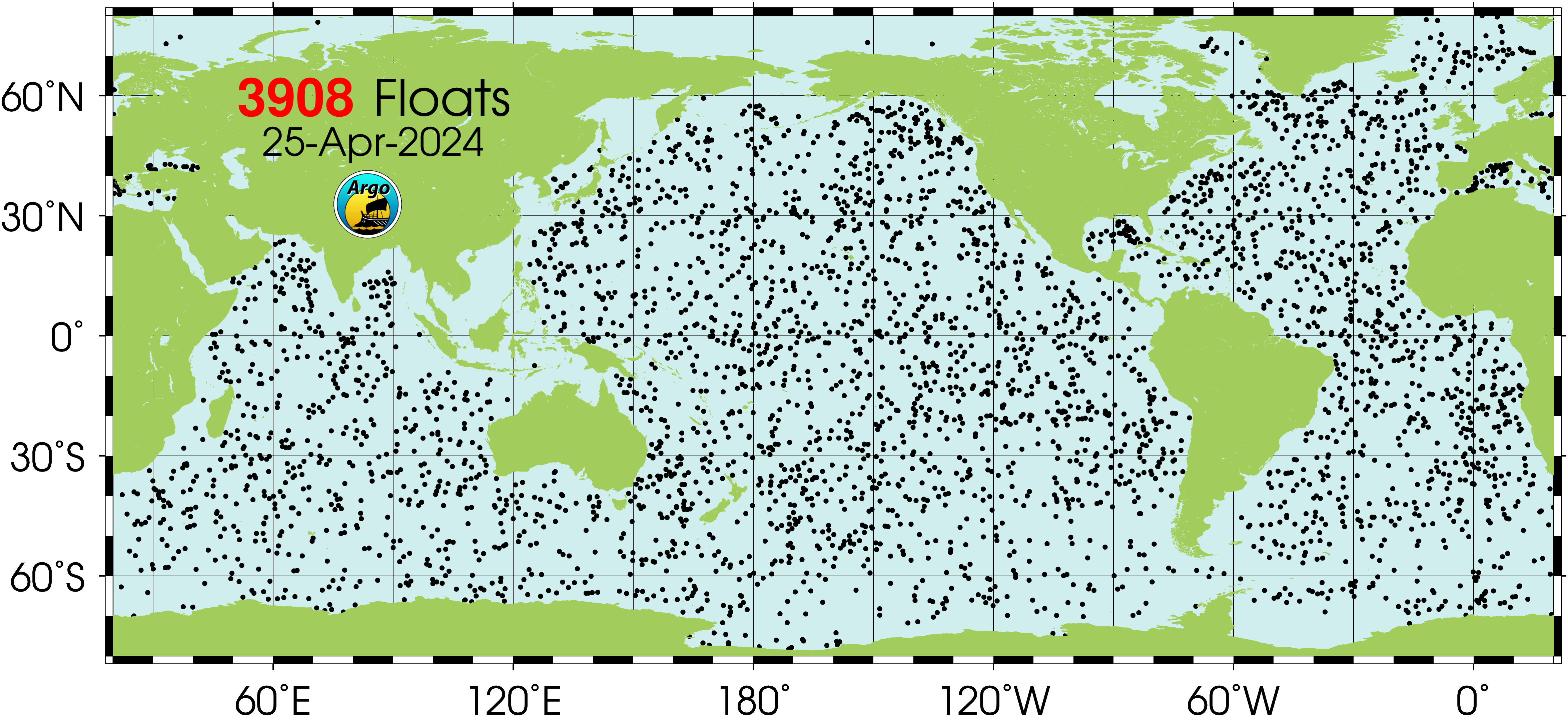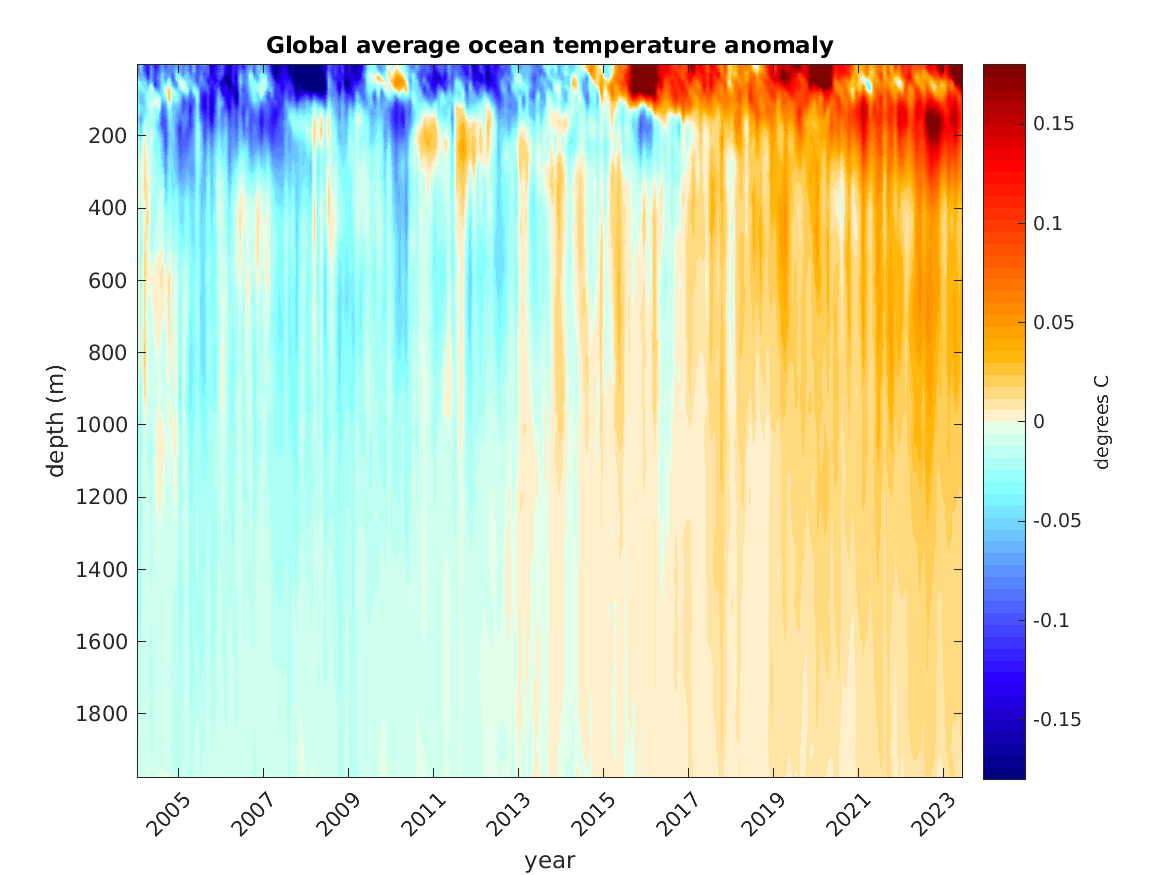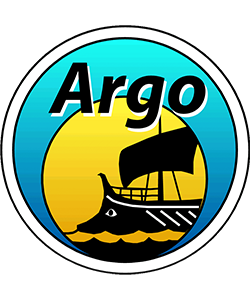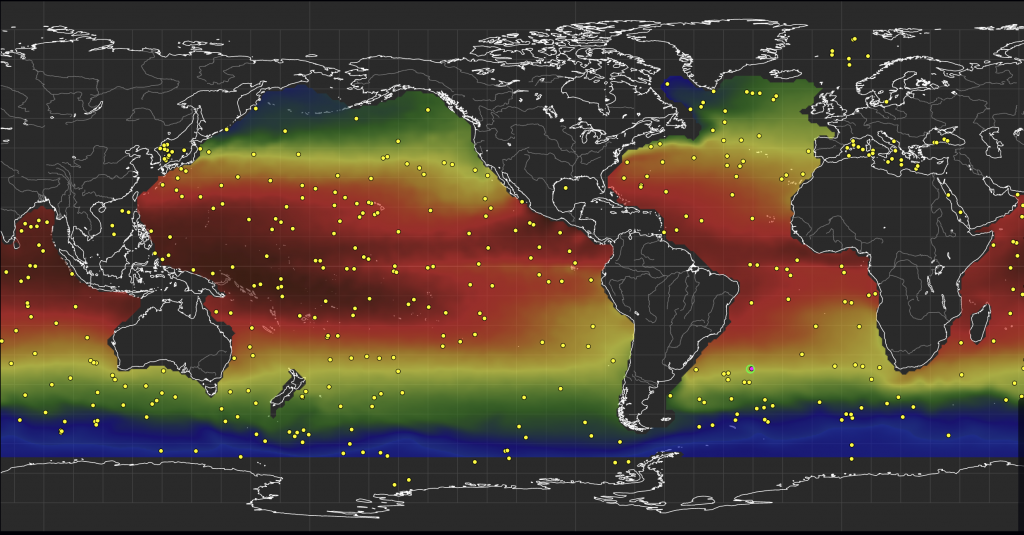Argo’s status
| Argo deployments began in 2000, and by November 2012, the millionth profile was collected with the 2 millionth profile collected in November 2018 and the 3 millionth profile collected in July 2024. Today, even with close to 4000 active floats, there are still some areas of the ocean that are over-populated while others have gaps that need to be filled with additional floats. Today’s tally of floats is shown in the figure to the right and additional float statistics can be found here. To maintain the Argo array, national programs need to provide 5-600 floats per year.
The original global Argo array was designed for the open ocean excluding seasonal sea-ice zones and marginal seas. Thanks to both two-way communication and ice-sensing algorithms on floats, these technical limitations are largely mitigated. The concept of Argo has always been of a spatially complete global array. Therefore, including seasonal sea-ice zones and marginal seas moves the target number of Argo floats from 3000 to 3800. To learn more about the new Argo design, click here. In addition to the globalization of core Argo described above, there are several Argo enhancements that are in various stages of development and implementation. These include extended coverage to the ocean bottom, additional floats equipped with bio-geochemical sesnors, and enhanced spatial coverage in boundary current regions and equatorial regions. Besides float deployment, Argo has worked hard to develop two separate data streams: real time and delayed mode. A real time data delivery and quality control system has been established that delivers 90% of profiles to users via two global data centers (GDACs) within 12 hours and 80% arriving within 6 hours. A delayed mode quality control system (DMQC) has been established and 75% of all eligible profiles have had DMQC applied. Float reliability has improved almost every year and the float lifetime has been extended. Argo has developed a large user community in universities, government labs and meteorological/climate analysis/forecasting centers. The need for global Argo observations will continue indefinitely into the future, though the technologies and design of the array will evolve as better instruments are built, models are improved, and more is learned about ocean variability. |
 Maps displaying statistics about the Argo array, including its extensions into high latitudes and marginal seas, biogeochemical sensors, communication systems, float type, etc., can be found in the map section on the Argo Information Centre website. Maps displaying statistics about the Argo array, including its extensions into high latitudes and marginal seas, biogeochemical sensors, communication systems, float type, etc., can be found in the map section on the Argo Information Centre website.
|
 |
 The above map shows the actual number of floats in boxes as compared to the target number of floats. Red/orange/yellow boxes do not have enough floats, while green boxes have enough or even more than necessary. The above map shows the actual number of floats in boxes as compared to the target number of floats. Red/orange/yellow boxes do not have enough floats, while green boxes have enough or even more than necessary. |

